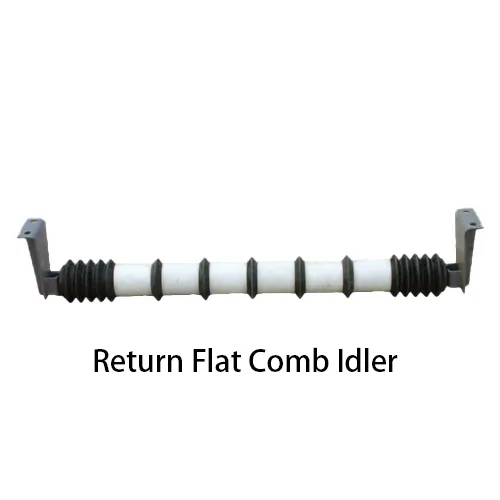 Afrikaans
Afrikaans  Albanian
Albanian  Amharic
Amharic  Arabic
Arabic  Armenian
Armenian  Azerbaijani
Azerbaijani  Basque
Basque  Belarusian
Belarusian  Bengali
Bengali  Bosnian
Bosnian  Bulgarian
Bulgarian  Catalan
Catalan  Cebuano
Cebuano  Corsican
Corsican  Croatian
Croatian  Czech
Czech  Danish
Danish  Dutch
Dutch  English
English  Esperanto
Esperanto  Estonian
Estonian  Finnish
Finnish  French
French  Frisian
Frisian  Galician
Galician  Georgian
Georgian  German
German  Greek
Greek  Gujarati
Gujarati  Haitian Creole
Haitian Creole  hausa
hausa  hawaiian
hawaiian  Hebrew
Hebrew  Hindi
Hindi  Miao
Miao  Hungarian
Hungarian  Icelandic
Icelandic  igbo
igbo  Indonesian
Indonesian  irish
irish  Italian
Italian  Japanese
Japanese  Javanese
Javanese  Kannada
Kannada  kazakh
kazakh  Khmer
Khmer  Rwandese
Rwandese  Korean
Korean  Kurdish
Kurdish  Kyrgyz
Kyrgyz  Lao
Lao  Latin
Latin  Latvian
Latvian  Lithuanian
Lithuanian  Luxembourgish
Luxembourgish  Macedonian
Macedonian  Malgashi
Malgashi  Malay
Malay  Malayalam
Malayalam  Maltese
Maltese  Maori
Maori  Marathi
Marathi  Mongolian
Mongolian  Myanmar
Myanmar  Nepali
Nepali  Norwegian
Norwegian  Norwegian
Norwegian  Occitan
Occitan  Pashto
Pashto  Persian
Persian  Polish
Polish  Portuguese
Portuguese  Punjabi
Punjabi  Romanian
Romanian  Russian
Russian  Samoan
Samoan  Scottish Gaelic
Scottish Gaelic  Serbian
Serbian  Sesotho
Sesotho  Shona
Shona  Sindhi
Sindhi  Sinhala
Sinhala  Slovak
Slovak  Slovenian
Slovenian  Somali
Somali  Spanish
Spanish  Sundanese
Sundanese  Swahili
Swahili  Swedish
Swedish  Tagalog
Tagalog  Tajik
Tajik  Tamil
Tamil  Tatar
Tatar  Telugu
Telugu  Thai
Thai  Turkish
Turkish  Turkmen
Turkmen  Ukrainian
Ukrainian  Urdu
Urdu  Uighur
Uighur  Uzbek
Uzbek  Vietnamese
Vietnamese  Welsh
Welsh  Bantu
Bantu  Yiddish
Yiddish  Yoruba
Yoruba  Zulu
Zulu return pulley
The Return Pulley A Crucial Component in Mechanical Systems
In the realm of mechanical engineering and design, the return pulley is often a pivotal element that contributes to the functionality and efficiency of various systems. Whether found in simple applications like cable systems or more complex configurations within extensive machinery, understanding the role of the return pulley can provide insights into both operational effectiveness and performance optimization.
What is a Return Pulley?
A return pulley is a type of pulley that is used to redirect the motion of a cable or belt within a mechanical system. It primarily serves the purpose of changing the direction of force or motion in a way that facilitates better management of load, tension, and operational dynamics. The return pulley is typically positioned at an appropriate angle to guide the cable or belt back toward the system after it has completed its initial function, such as lifting, pulling, or transporting an object.
Applications of Return Pulleys
The applications of return pulleys are vast and varied across multiple industries. In the construction sector, return pulleys are crucial components in cranes and hoisting equipment, enhancing their capability to lift heavy loads and redirecting the lifting cables efficiently. This ensures that the forces exerted on the system remain balanced, reducing wear and tear on components and enhancing safety.
In the automotive industry, return pulleys are often found in various systems, including timing belts and accessory drive belts
. They play a critical role in maintaining proper tension, which is essential for the smooth operation of engine components. A well-maintained return pulley ensures that the belts do not slip or become misaligned, which could lead to catastrophic failures or decreased engine performance.Moreover, return pulleys are also frequently utilized in the manufacturing sector, especially in production lines where conveyor systems are employed. These pulleys assist in redirecting carrier belts, ensuring efficient material transport from one station to another without interruption.
return pulley

Mechanism and Design Considerations
The design and construction of a return pulley can significantly impact its efficiency and longevity. Typically, return pulleys are made from robust materials such as steel or high-strength polymers that can withstand the significant tension and wear over time. Their size, shape, and placement within a system are carefully calculated to ensure minimal friction and optimal load management.
One key consideration in the design of a return pulley system is the angle at which the cable or belt interacts with the pulley. An optimal angle can significantly reduce the amount of force required to move the load, thereby enhancing energy efficiency and prolonging the lifespan of the system. Additionally, incorporating features like bearings can minimize friction, allowing for smoother operation and less energy loss.
Maintenance and Longevity
Proper maintenance of return pulleys is vital for ensuring their reliability and longevity. Regular inspection for wear, corrosion, and misalignment is essential. Identifying issues early on can prevent more significant failures down the line. Lubrication of moving parts, cleaning debris from the pulley system, and replacing worn components can help maintain optimal performance.
Furthermore, it is important to adhere to manufacturer guidelines regarding load limits and operational capacities. Overloading a return pulley can lead to distress and eventual failure, which could have severe safety implications in operations especially when heavy loads or high tensions are involved.
Conclusion
The return pulley is more than just a simple mechanical component; it is an integral part of many systems that enhances functionality, facilitates load management, and ensures operational safety. By understanding its mechanism, applications, and maintenance best practices, engineers and technicians can optimize their use in various settings, ultimately contributing to the efficiency and safety of mechanical operations. As technology advances, the design and applications of return pulleys will continue to evolve, underscoring their importance in the ever-growing fields of automation and engineering.
-
Revolutionizing Conveyor Reliability with Advanced Rubber Lagging PulleysNewsJul.22,2025
-
Powering Precision and Durability with Expert Manufacturers of Conveyor ComponentsNewsJul.22,2025
-
Optimizing Conveyor Systems with Advanced Conveyor AccessoriesNewsJul.22,2025
-
Maximize Conveyor Efficiency with Quality Conveyor Idler PulleysNewsJul.22,2025
-
Future-Proof Your Conveyor System with High-Performance Polyurethane RollerNewsJul.22,2025
-
Driving Efficiency Forward with Quality Idlers and RollersNewsJul.22,2025





























